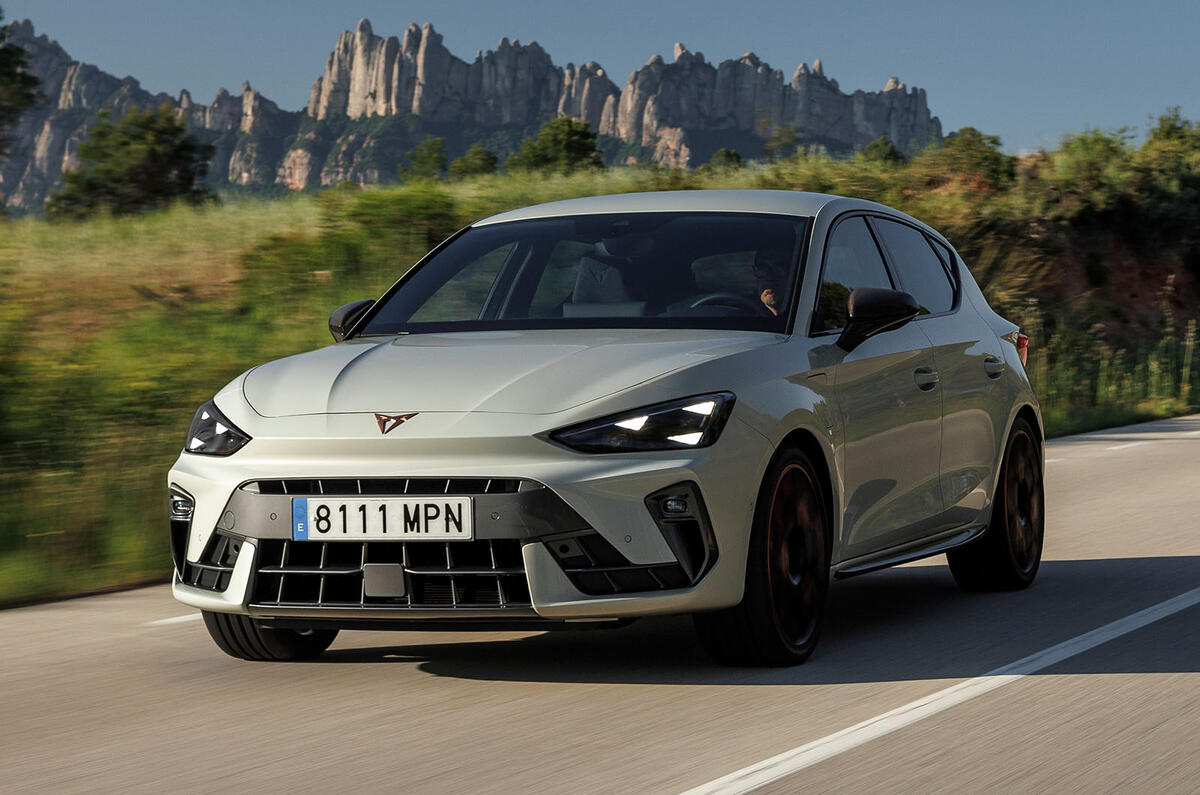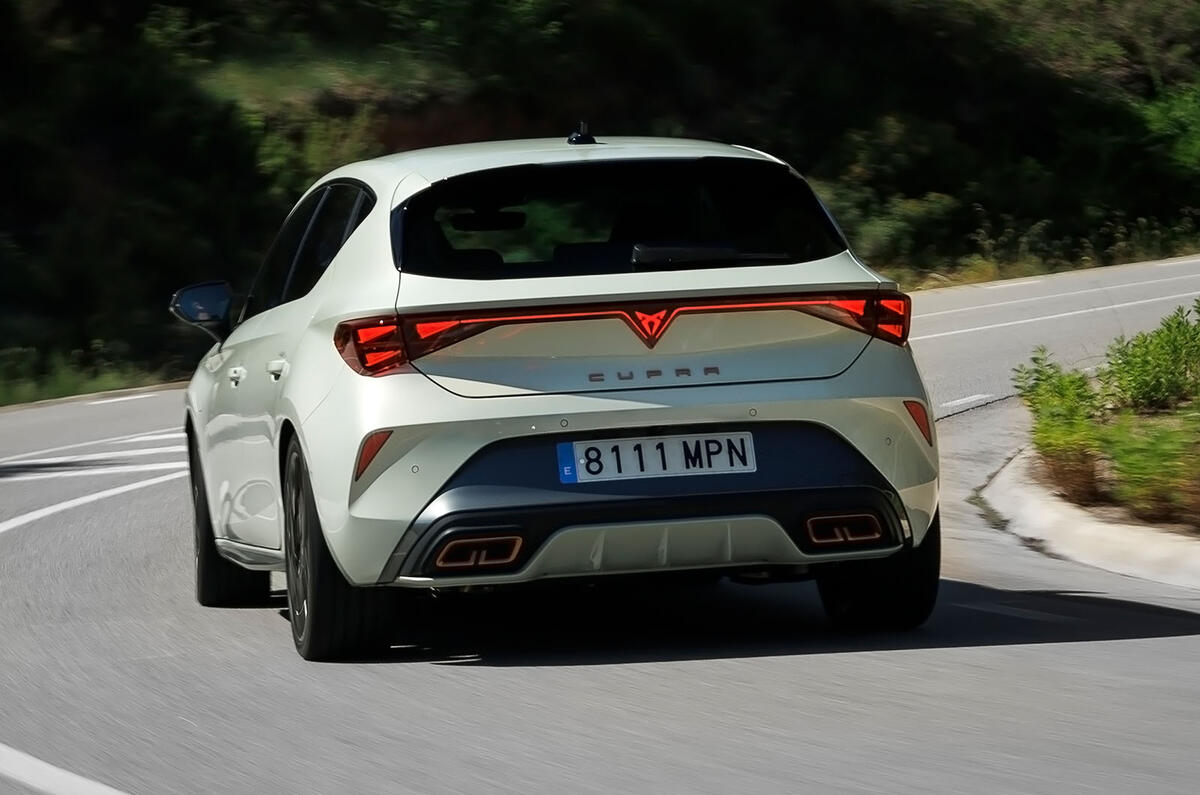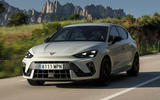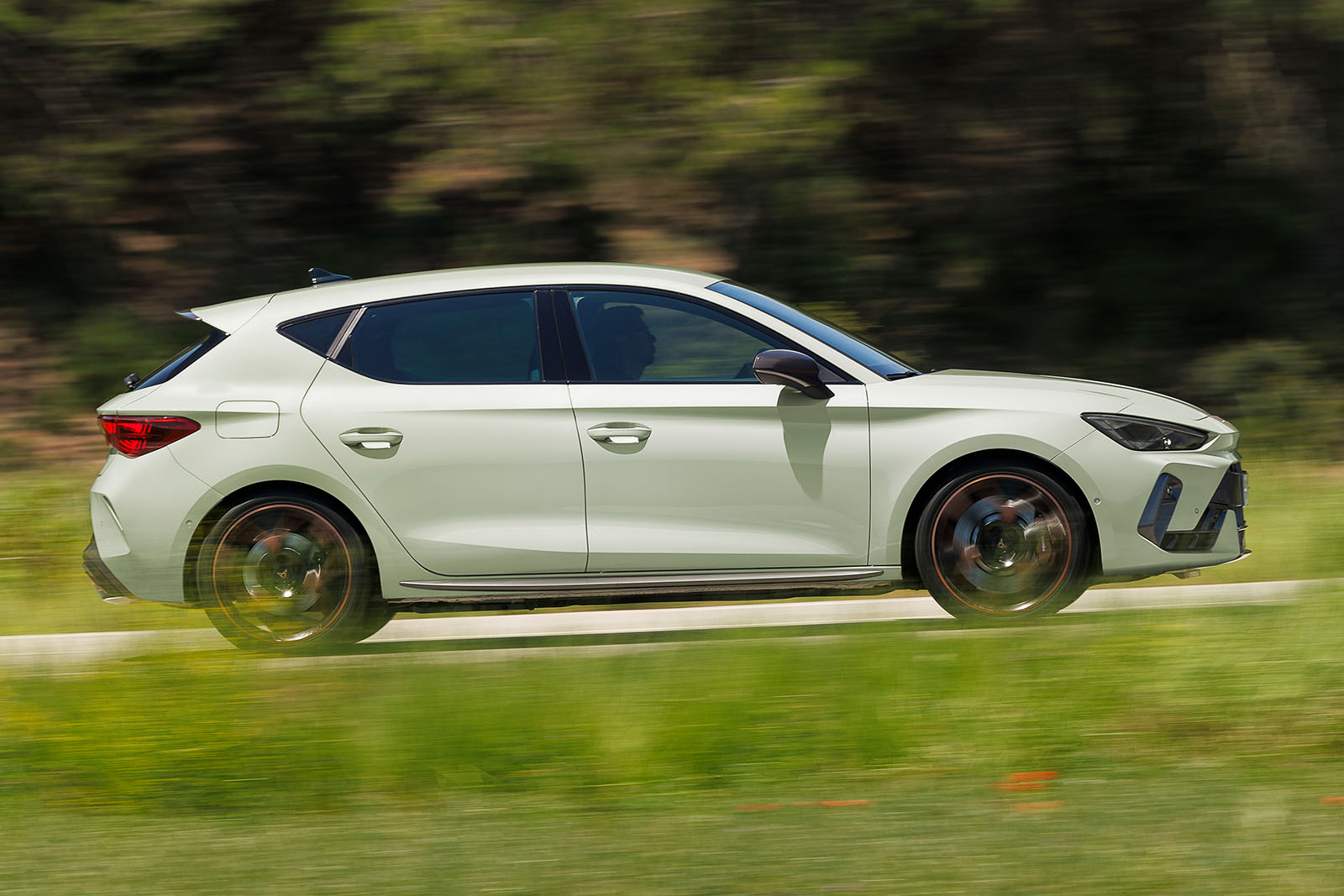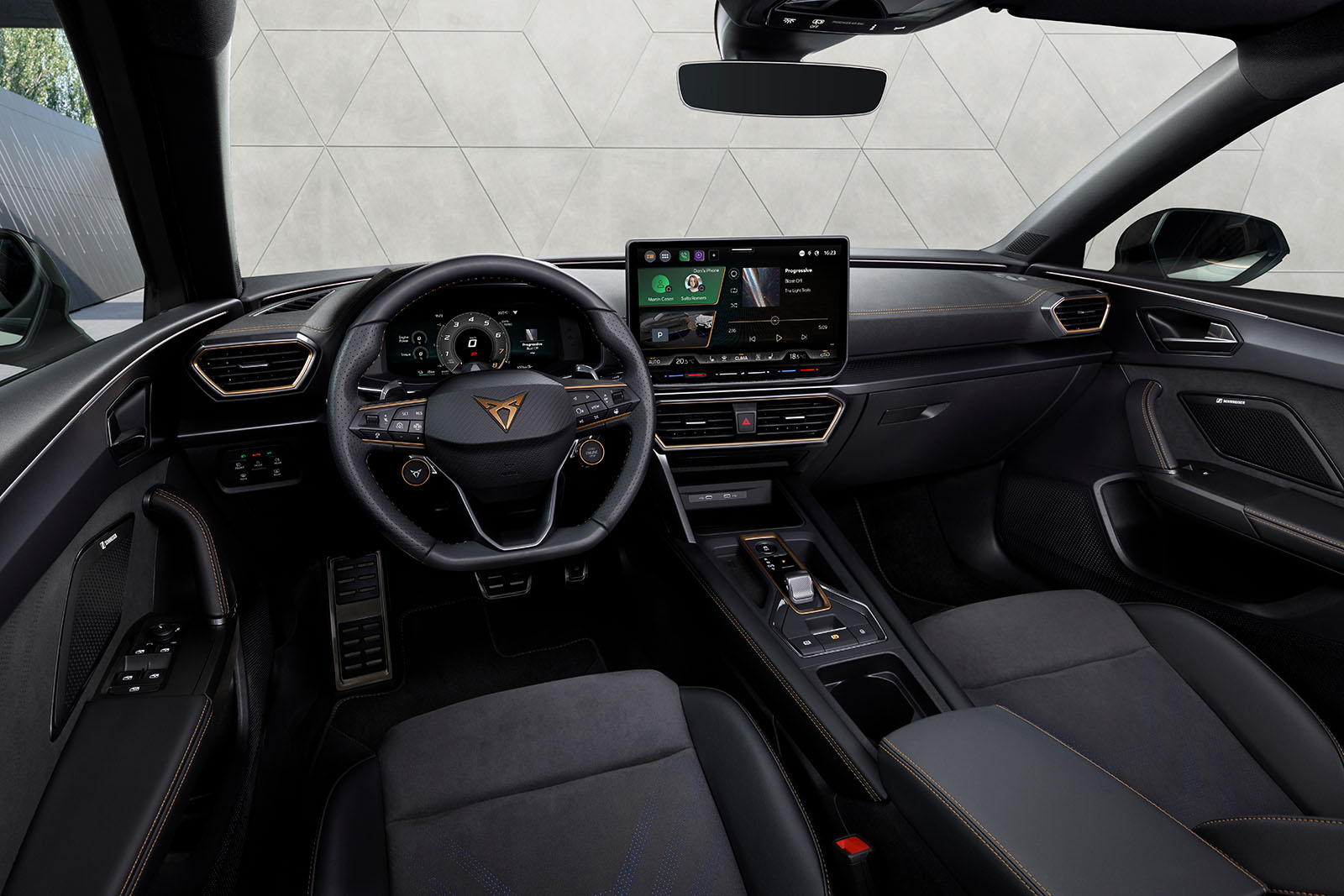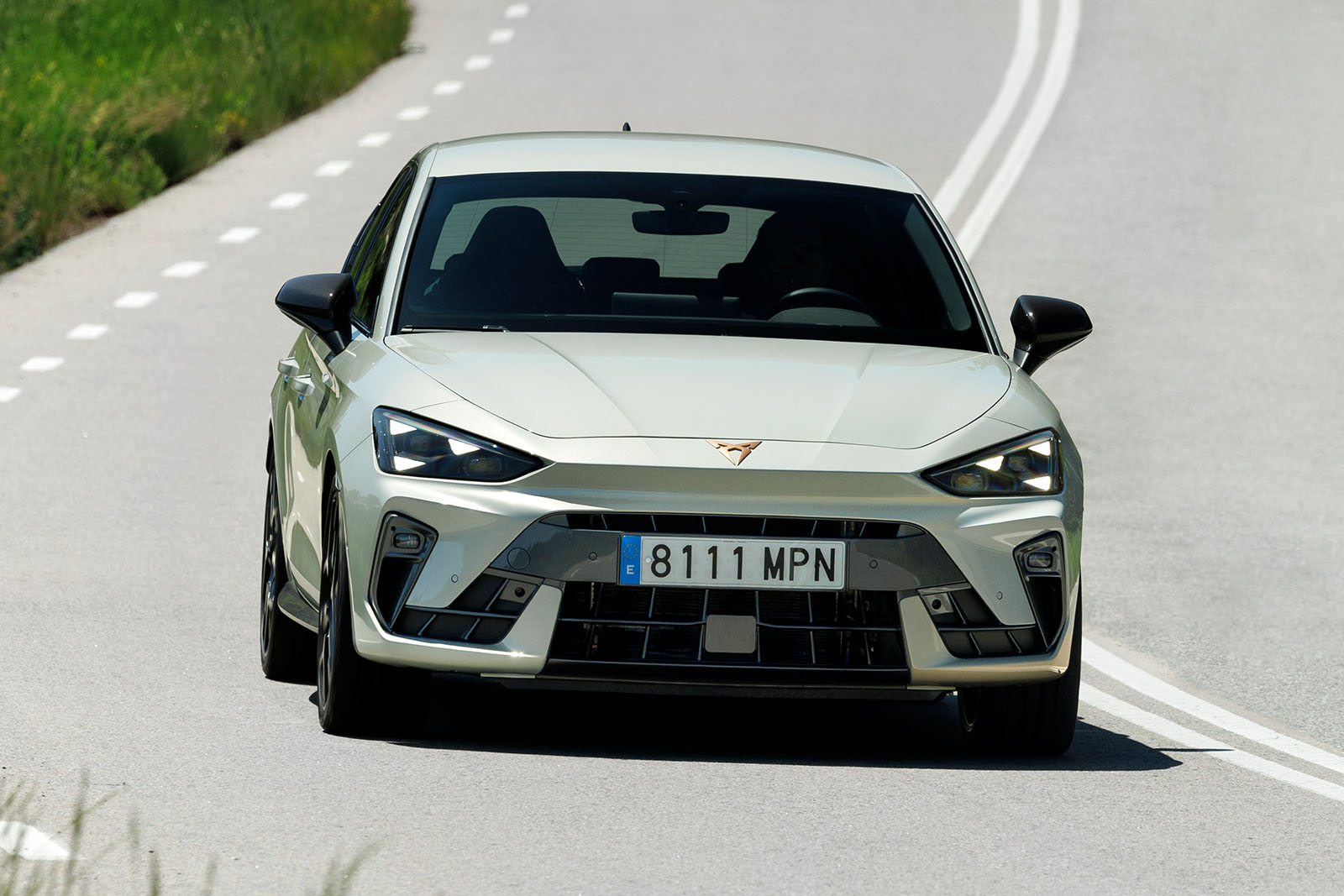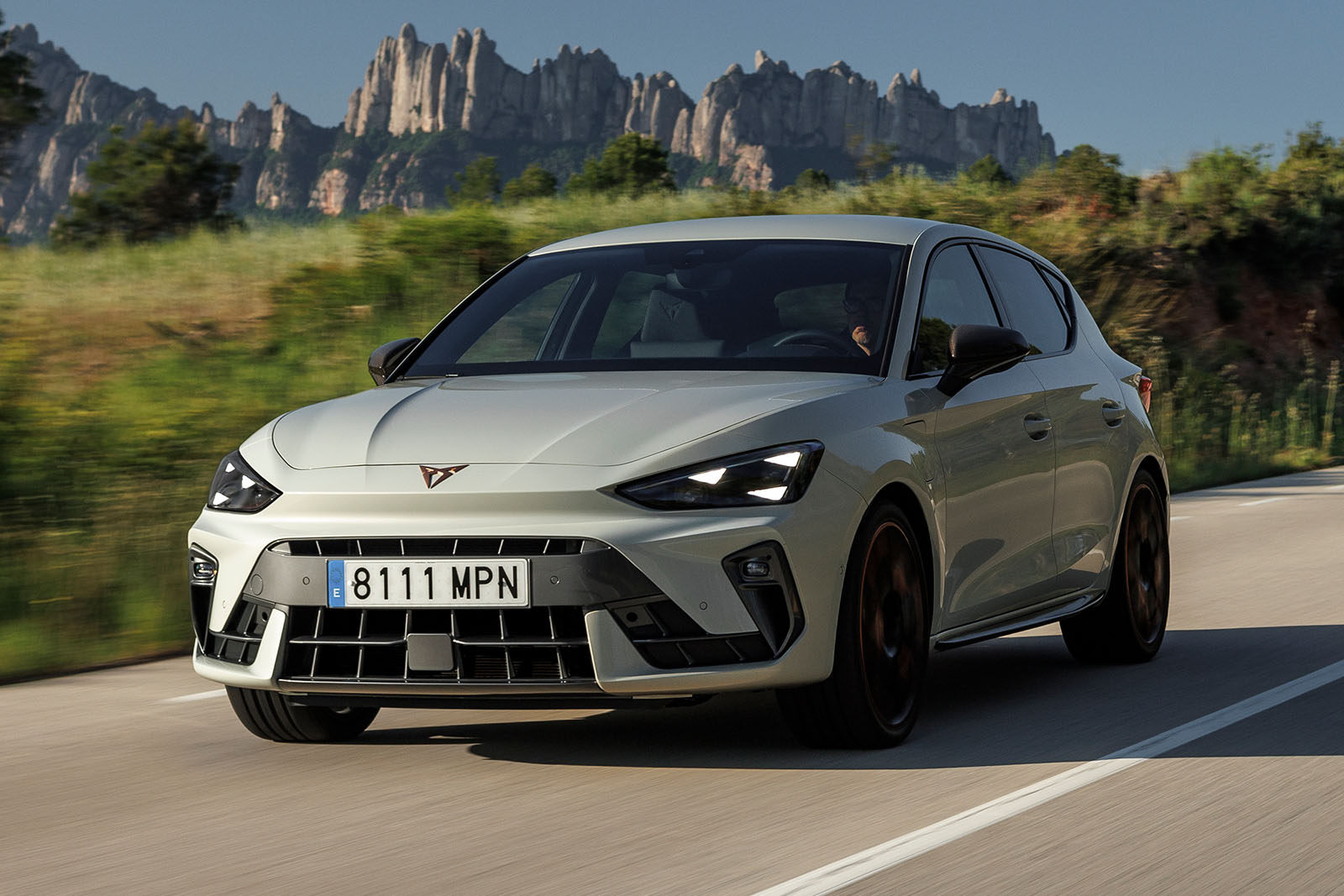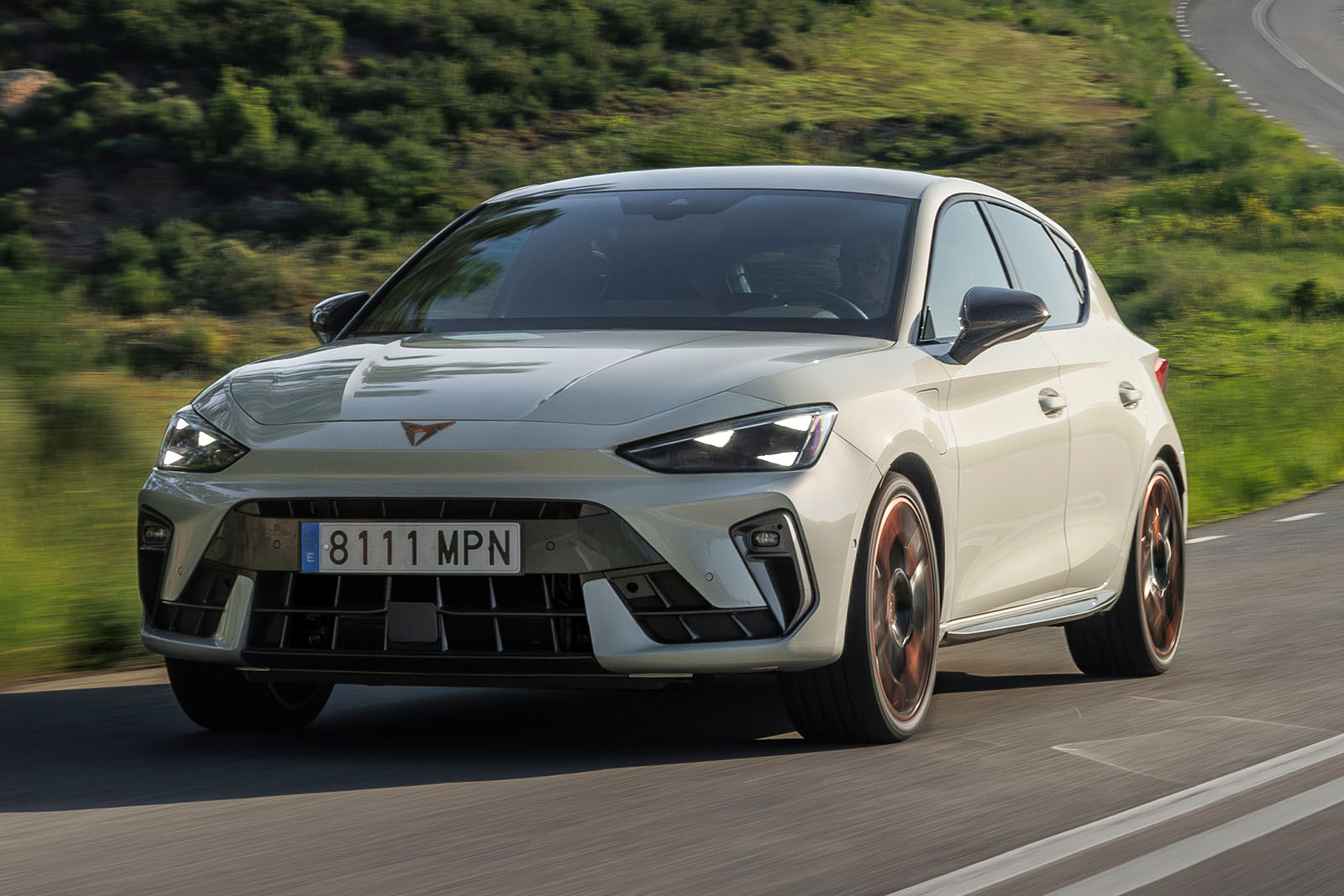The Cupra Leon is no longer a rebadged Seat with fancy trim.
At least that’s what Cupra wants you to think. What once was Seat’s performance arm has broken a little freer of the mothership and developed the Leon as a standalone product with its own driving character, technology and options.
How is it trying to achieve this specifically? In a few ways; partly because it is one of the first cars in Cupra's line-up, along with the new Formentor, to receive the brand's new design language with a shark-nose front end and triangular matrix LEDs, but also because of an "environmentally conscious approach to performance" - achieved with more sustainable materials during manufacture - and new interior technology.
At the same time, the Leon is trying to grab a larger share of the performance car pie. The arrival of a brand new 329bhp engine and 268bhp plug-in hybrid (up 27bhp from before), with the option of front- or four-wheel drive, pure combustion or electrically assisted power.
This increased focus on performance comes as competition in this sector of the market gets tougher than ever, not least because parent brand Volkswagen offers the similarly-conceived Golf GTI, Honda the brilliant Civic Type-R and, as a true alternative, Hyundai's equally tremendous Ioniq 5 N; a car which we’ve awarded five stars.
We’ve previously road tested the 306bhp four-wheel-drive estate and found it to be fiercely quick but lacking some involvement, while the hybrid’s 1.4 never felt at home in a performance derivative.



